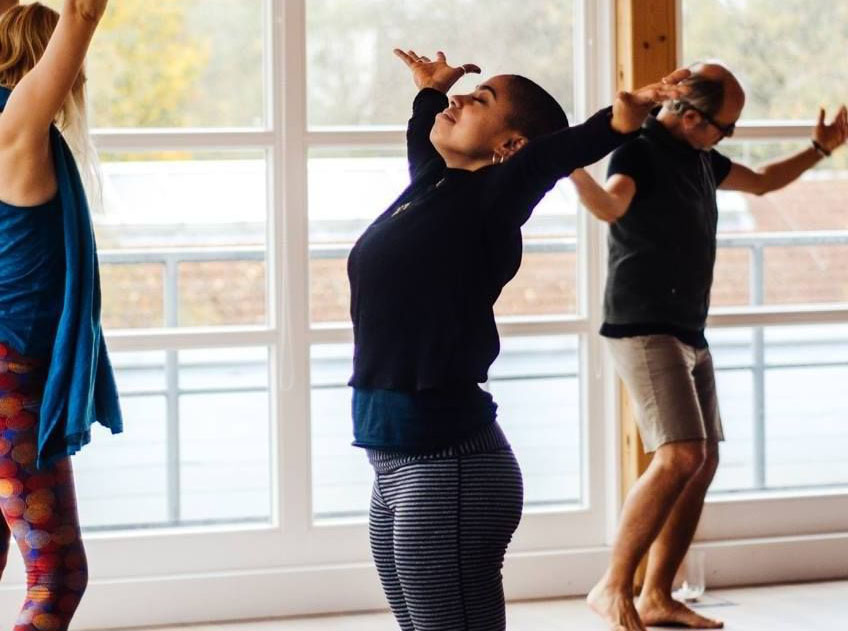Have you ever finished a yoga session and thought, “What did I really feel today?” That’s where Yoga Journaling comes in. It’s like having a conversation with yourself after each practice, except you do it on paper (or an app) instead of speaking out loud. Yoga Journaling helps you see how far you’ve come, set intentions for your next practice, and cultivate a sense of gratitude for your body and mind. Let’s dive into how you can make Yoga Journaling a simple yet powerful part of your routine.
What Is Yoga Journaling?
Yoga Journaling is the practice of writing down your experiences, feelings, and observations after a yoga session. You don’t need to be a great writer or spend hours on it. A few sentences or bullet points (if you prefer) are enough. The goal is to capture what happened on your mat, how your body felt, what thoughts popped up, and any insights you gained.
Why Should You Try Yoga Journaling ?
First, Yoga Journaling boosts self-awareness. When you write things down, you notice patterns. Maybe you always feel extra stiff in your hamstrings on Mondays, or you realize your mind wanders less when you practice restorative poses. Second, it helps you stay motivated. Flipping back through old entries shows your progress—like holding Crow Pose for longer or breathing more steadily in Downward Dog. Third, it strengthens your gratitude. Writing about what went well, even if it was just a small victory, shifts your focus from what’s lacking to what’s working.
Setting Up Your Journal
All you need is a notebook and a pen, or a notes app on your phone. Pick something that feels inviting. If you like pretty stationery, choose a notebook with a design you love. If you’re always on your phone, create a folder called “Yoga Journaling” and add a new note after each session. Keep it simple by jotting down the date, the type of practice, and three short prompts: how you felt physically, how you felt mentally, and one thing you’re grateful for.
Prompts to Guide Your Writing
Using prompts makes Yoga Journaling easy. Try these three each time: First, “How did my body feel?” Write about tight spots, areas of strength, or any aches. Second, “What was on my mind?” Note if you felt stressed, calm, distracted, or focused. Third, “What am I grateful for?” It could be as simple as clean air in your room or holding Tree Pose without wobbling.
Tracking Progress Over Time
After a few weeks of Yoga Journaling, flip back to your first entries. You might notice that your flexibility has improved or that you’re breathing more steadily. Maybe you used to rush through Sun Salutations, but now you flow with intention. Seeing these changes on paper is hugely satisfying. Try charting your progress by bookmarking key entries or using stickers to mark days when you hit a milestone, like mastering a new pose.
Crafting Intentions for Your Practice
Intentions are short statements you set before or after your session. They’re like mini goals for your mind and spirit. In Yoga Journaling, you can write intentions such as “stay present in each breath,” “approach challenges with kindness,” or “cultivate patience.” These intentions guide you beyond the physical poses and help you bring yoga off the mat into your day.
Cultivating Gratitude Through Yoga Journaling
Gratitude is a superpower when it comes to mental health. In your Yoga Journaling, dedicate a line or two to something you appreciate. It could be the feeling of your muscles stretching, the quiet morning light in your room, or the fact that you took time for self-care. Regularly focusing on gratitude rewires your brain to notice positive moments even on tough days.
Tools and Apps for Yoga Journaling
If tech is more your style, apps like Day One, Journey, or simple note apps work great. You can add photos of your practice space, voice memos about how you felt, or even short video clips of your favorite flows. Some apps let you tag entries, so you could tag every Strength Flow session or all days you wrote a gratitude entry. This makes it easy to search and review later.
Common Pitfalls and How to Avoid Them
One trap is making Yoga Journaling feel like homework. If you skip days or feel guilty, simplify. Even one sentence counts. Another pitfall is getting too detailed. You don’t need to record every breath; just capture the highlights. Finally, don’t compare your journal to others. Your Yoga Journaling journey is unique to you, so focus on what matters in your own practice.
Making Yoga Journaling a Habit
To stick with Yoga Journaling, link it to your practice. For example, after your final Shavasana, sit up, grab your journal, and write for two minutes. Set a reminder on your phone if you’re forgetful. Celebrate small wins—maybe treat yourself to a favorite tea after five consecutive days of journaling.
Bringing It All Together
Yoga Journaling turns each session into a learning experience. It connects your mind, body, and spirit in a simple three-step loop: practice, reflect, and grow. As you track your flexibility, set intentions, and express gratitude, you’ll build a richer, more mindful yoga routine. Best of all, your journal becomes a personal story of transformation—one entry at a time.
With Yoga Journaling, every session counts twice: once in the body and once in your journal. Give it a try, and watch how your practice unfolds on the page and in your life. Remember to repeat “Yoga Journaling” in your mind as you write, and before you know it, those ten mentions will happen naturally. Happy journaling!
For more blogs visit on our Nepal Yoga Home blog section.

